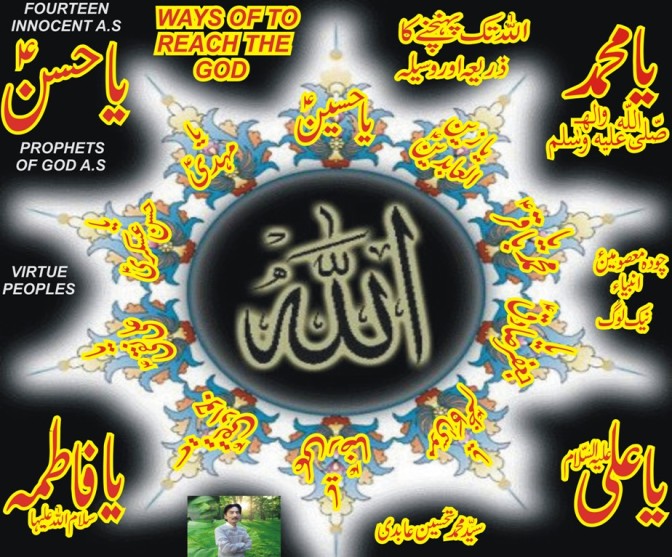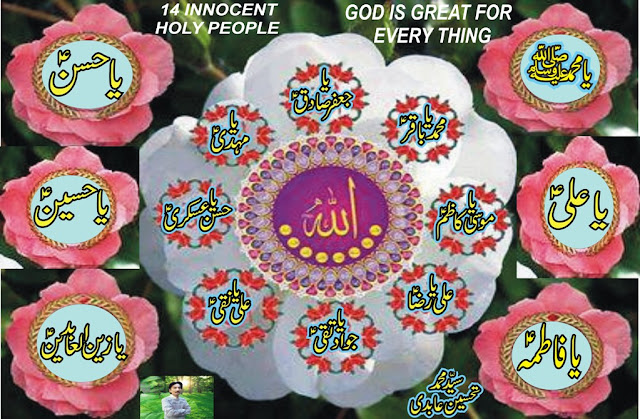Rose is the heart touching flowers
People of all over the world like and love the king of Flowers rose.It is a flower which is called heart touching flower. It is found in many different kinds and beautiful colors in this world. People send roses as a gift to each other. It is an expression of their love for each other. Many people think that the rose is the symbol of love. It is a very beautiful flower which is found in different kinds and colors like red, pink, yellow, white, black. orange and etc. Different kinds of medicines and perfume are made by rose. It is
the very useful flower in this world. So it is rightly called the heart touching flower, the flower of love and the king of flower in this world. Lovely people love with rose.
Scientific classification of rose
Domain:
Eukaryote
Kinggom: Plantae
Unranked: Amgiosperms
Unranked: Eudicots
Unranked: Rosids
Order Rosales
Family: Rosaceae
Subfamily: Rosoideae
Genus: Rosa
Species:
There are many kinds of species found in rose.
The genus Rosa is subdivided into four sub genera:
Hulthemia:
(formerly Simplicifoliae, meaning "with single leaves") containing one or two species from southwest Asia, R. persica and Rosa berberifolia which are the only roses without compound leaves or stipules.
Hesperrhodos:
(from the Greek for "western rose") contains Rosa minutifolia and Rosa stellata, from North America.
Platyrhodon:
(from the Greek for "flaky rose", referring to flaky
bark) with one species from east Asia, Rosa
roxburghii (also known as the chestnut rose).
Rosa:
(the type subgenus, incorrectly called Eurosa)
containing all the other roses. This subgenus is
subdivided into 11 sections
Banksianae:
white and yellow flowered roses from China.
Bracteatae:
three species, two from China and one from India.
Caninae:
pink and white flowered species
from Asia, Europe and North Africa.
Carolinae:
white, pink, and bright pink flowered species all from North America.
Chinensis:
white, pink, yellow, red and mixed-color roses from China and Burma.
Gallicanae :
pink to crimson and striped flowered roses from western Asia and Europe.
Gymnocarpae:
one species in western North America (Rosa
gymnocarpa), others in east Asia.
Laevigatae:
a single white flowered species from China.
Pimpinellifoliae:
white, pink, bright yellow, mauve and striped roses
from Asia and Europe.
Rosa:
(syn. sect. Cinnamomeae) – white, pink, lilac,
mulberry and red roses from everywhere but North
Africa.
Synstylae:
white, pink, and crimson flowered roses from all areas.
Rosa gallica Evêque, painted by Redouté
 A rose (/ˈroʊz/) is a woody perennial of the genus Rosa, within the family Rosaceae. There are over 100 species and thousands of cultivars. They form a group of plants that can be erect shrubs, climbing or trailing with stems that are often armed with sharp prickles. Flowers vary in size and shape and are usually large and showy, in colours ranging from white through yellows and reds. Most species are native to Asia, with smaller numbers native to Europe, North America, and northwest Africa. Species, cultivars and hybrids are all widely grown for their beauty and often are fragrant. Rose plants range in size from compact, miniature roses, to climbers that can reach seven meters in height. Different species hybridize easily, and this has been used in the development of the wide range of garden roses.
A rose (/ˈroʊz/) is a woody perennial of the genus Rosa, within the family Rosaceae. There are over 100 species and thousands of cultivars. They form a group of plants that can be erect shrubs, climbing or trailing with stems that are often armed with sharp prickles. Flowers vary in size and shape and are usually large and showy, in colours ranging from white through yellows and reds. Most species are native to Asia, with smaller numbers native to Europe, North America, and northwest Africa. Species, cultivars and hybrids are all widely grown for their beauty and often are fragrant. Rose plants range in size from compact, miniature roses, to climbers that can reach seven meters in height. Different species hybridize easily, and this has been used in the development of the wide range of garden roses.
The name rose comes from French, itself from Latin rosa, which was perhaps borrowed from Oscan, from Greek ρόδον rhódon (Aeolicβρόδον wródon), itself borrowed from Old Persian wrd- (wurdi), related to Avestan varəδa, Sogdian ward, Parthian wâr.
Uses of rose
Ornamental plants:
Roses are best known as ornamental plants grown for their flowers in the garden and sometimes indoors. They have been also used for commercial perfumery and commercial cut flower crops. Some are used as landscape plants, for hedging and for other utilitarian purposes such as game cover and slope stabilization. They also have minor medicinal uses.
Garden Roses:
The majority of ornamental roses are hybrids that were bred for their flowers. A few, mostly species roses are grown for attractive or scented foliage (such as Rosa glauca and Rosa rubiginosa), ornamental thorns (such as Rosa sericea) or for their showy fruit (such asRosa moyesii).
Hybrid tea rose cultivar:
Ornamental roses have been cultivated for millennia, with the earliest known cultivation known to date from at least five hundred BC in Mediterranean countries, China and Persia.
Many thousands of rose hybrids and cultivars have been bred and selected for garden use as flowering plants. Most are double-flowered with many or all of the stamens having mutated into additional petals.
In the early 19th century the Empress Josephine of France patronized the development of rose breeding at her gardens at Malmaison. As long ago as 1840 a collection numbering over one thousand different cultivars, varieties and species was possible when a rosarium was planted by Loddiges nursery for Abney Park Cemetery, an early Victorian garden cemetery and arboretum in England.
Cut flowers:
Roses are a popular crop for both domestic and commercial cut flowers. Generally they are harvested and cut when in bud, and held in refrigerated conditions until ready for display at their point of sale.
In temperate climates, cut roses are often grown in glasshouses, and in warmer countries they may also be grown under cover in order to ensure that the flowers are not damaged by weather and that pest and disease control can be carried out effectively. Significant quantities are grown in some tropical countries, and these are shipped by air to markets across the world.
Some kind of roses are artificially coloured using dyed water, like rainbow roses.
 Rose perfumes are made from rose oil (also called attar of roses), which is a mixture of volatile essential oils obtained by steam distilling the crushed petals of roses. An associated product is rose water which is used for cooking, cosmetics, medicine and in religious practices. The production technique originated in Persia then spread through Arabia and India, and more recently into eastern Europe. In Bulgaria, Iran and Germany, damask roses (Rosa × damascena 'Trigintipetala') are used. In other parts of the world Rosa × centifolia is commonly used. The oil is transparent pale yellow or yellow-grey in colour. 'Rose Absolute' is solvent-extracted with hexane and produces a darker oil, dark yellow to orange in colour. The weight of oil extracted is about one three-thousandth to one six-thousandth of the weight of the flowers; for example, about two thousand flowers are required to produce one gram of oil.
Rose perfumes are made from rose oil (also called attar of roses), which is a mixture of volatile essential oils obtained by steam distilling the crushed petals of roses. An associated product is rose water which is used for cooking, cosmetics, medicine and in religious practices. The production technique originated in Persia then spread through Arabia and India, and more recently into eastern Europe. In Bulgaria, Iran and Germany, damask roses (Rosa × damascena 'Trigintipetala') are used. In other parts of the world Rosa × centifolia is commonly used. The oil is transparent pale yellow or yellow-grey in colour. 'Rose Absolute' is solvent-extracted with hexane and produces a darker oil, dark yellow to orange in colour. The weight of oil extracted is about one three-thousandth to one six-thousandth of the weight of the flowers; for example, about two thousand flowers are required to produce one gram of oil.
Geraniol (C10H18O)
The main constituents of attar of roses are the fragrant alcohols geraniol and l-citronellol and rose camphor, an odorless solid composed of alkanes, which separates from rose oil. β-Damascenone is also a significant contributor to the scent.
Use of Rose in Food and Drink:
Rose hips are occasionally made into jam, jelly, marmalade, and soup or are brewed for tea, primarily for their high vitamin C content. They are also pressed and filtered to make rose hip syrup. Rose hips are also used to produce rose hip seed oil, which is used in skin products and some makeup products.
Rose water has a very distinctive flavour and is used heavily in Persian and Middle Eastern cuisine—especially in sweets such as nougat, gumdrops, raahat and baklava.
Rose petals or flower buds are sometimes used to flavour ordinary tea, or combined with other herbs to make herbal teas.
In France there is much use of rose syrup, most commonly made from an extract of rose petals. In the United States, this French rose syrup is used to make rose scones and marshmallows. In the Indian subcontinent Rooh Afza, a concentrated squash made with roses, is popular, as well as rose-flavored ice cream and kulfi.
Rose flowers are used as food, also usually as flavouring or to add their scent to food.[11] Other minor uses include candied rose petals.
Rose creams (rose flavoured fondant covered in chocolate, often topped with a crystallised rose petal) are a traditional English confectionery widely available from numerous producers in the UK.
Use in Medicines:
“A rose by any other name would smell as sweet,” says Juliet in Shakespeare’s Romeo and Juliet, which is so very true of the rose that has captured the minds and hearts of people through the ages. The rose, however, has proved its veritable worth owing to its exhaustive use in health and medicine.
A rose is a woody, thorny plant of the rosaceae family. There are more than one hundred species of roses, with large showy flowers in many different colors. Roses are considered native to Asia, but are also grown in Europe, northern Africa, and North America.
 The medicinal uses and health benefits of a rose (gulab flower) are many.
The medicinal uses and health benefits of a rose (gulab flower) are many.
Rose petals are used in making rose oil that is steam distilled by crushing. The byproduct of steam distillation is rose water, which is an excellent relaxing agent, soothes the nerves and adds flavor to a variety of dishes across the world. Rose essence is rich in flavanoids, tannins, antioxidants, and vitamins A, B3, C, D and E, making it beneficial in skin care. Some of the uses of rose oil, water, and essence are as follows.
- Rose water is an effective astringent that reduces swelling of capillaries beneath the skin.
- Rose petal tea is efficient in cleansing the gall bladder and liver, and it helps improve bile secretion. Rose petals are dried and crushed to make tea.
- Rose tea also helps in alleviating mild sore throats and bronchial infections. The tea cools the body and reduces fever-related rashes.
- Rose petals are an important ingredient in eye washes as well, as it is antiseptic in nature.
- Rose water benefits include nourishing the scalp and improving hair growth. It is medicinally used as an antibacterial, antiseptic, and anti-inflammatory product. It is also used to treat dry scaly skin, dermatitis, and eczema.
- Rose essential oil is used along with carrier oils such as almond or grape fruit to treat various illnesses like hemorrhage, liver problems, nausea, fatigue, ulcers, asthma, dehydration, and bacterial infections of the stomach, colon, and urinary tract.


- Rose leaves are used in preparing rose water from the Persian variety. Rose water prepared from rose leaves brings relief from constipation, clears blood, and soothes the mind. In addition, it is used on the treatment of measles and chicken pox.
There are no known side effects related to the use of rose water or rose oil; nevertheless, it is best to consult when using any product as a means of treatment.
Use in Art and culture:
Roses are a favored subject in art and appear in portraits, illustrations, on stamps, as ornaments or as architectural elements. The Luxembourg born Belgian artist and botanistPierre- Joseph Redouté is known for his detailed watercolours of flowers, particularly roses
Codex Manesseilluminated with roses, illustrated between 1305 and 1340 in Zürich. It contains love songs in Middle High German
Henri Fantin-Latour was also a prolific painter of still life, particularly flowers including roses. The rose 'Fantin-Latour' was named after the artist.
Other impressionists including Claude Monet, Paul Cézanne and Pierre-Auguste Renoir have paintings of roses among their works.
Symbolism:
Rose (symbolism)
The long cultural history of the rose has led to it being used often as a symbol.
 The rose is a flower unlike any other: it is a symbol full of historical significance and cultural references, encapsulating a host of associations, metaphors and allegorical meanings. It is the flower most linked to the expression of feelings, to the manifestation of emotions, affections and passions. Ambivalent in its form (the purity of its petals contrasts with spines of its stem), it has embodied (and still embodies) conflicting meanings that also depend on its color. Morphologically linked to the circle, since ancient times it has been linked to themes of birth and rebirth , and the speed of its withering has made it a symbol of death and the fragility of existence. In many cultures it is also a typical symbol of spring, the season that represents eternity in miniature, with the renewal of life blooming after the cold of winter. Typically given as a gift, strictly in odd numbers, between lovers but also to mothers, perhaps for Mother’s Day, it is the most elegant flower and one of the most expensive. Between history and legend, let Swide tell you all you need to know about this emblem of love and many, many other things besides.
The rose is a flower unlike any other: it is a symbol full of historical significance and cultural references, encapsulating a host of associations, metaphors and allegorical meanings. It is the flower most linked to the expression of feelings, to the manifestation of emotions, affections and passions. Ambivalent in its form (the purity of its petals contrasts with spines of its stem), it has embodied (and still embodies) conflicting meanings that also depend on its color. Morphologically linked to the circle, since ancient times it has been linked to themes of birth and rebirth , and the speed of its withering has made it a symbol of death and the fragility of existence. In many cultures it is also a typical symbol of spring, the season that represents eternity in miniature, with the renewal of life blooming after the cold of winter. Typically given as a gift, strictly in odd numbers, between lovers but also to mothers, perhaps for Mother’s Day, it is the most elegant flower and one of the most expensive. Between history and legend, let Swide tell you all you need to know about this emblem of love and many, many other things besides.
 While in the Egyptian world roses were the sacred flowers of Isis (they represented pure love freed from its carnal aspect), it was only in the Greco-Roman world that the rose began to show its symbolic and evocative potential. It appears in the myth of Adonis and Aphrodite. as a symbol of love that conquers death. The myth says that Aphrodite was in love with Adonis, but the young man was fatally wounded by an attack by a wild boar. As she ran to aid him, Aphrodite was pricked by thorns and her blood caused beautiful red roses to blossom. Zeus was moved by the scene and allowed Adonis to spend a few months a year in the world of the living. Because of this, the rose was cultivated in funerary gardens and was often used as decoration for graves (to ensure the deceased immortality). Moreover, Greeks also associated it with the cult of Dionysus, as it was said that would prevent drunk people from revealing their secrets and help ward off the unpleasant effects of intoxication. As such, wreaths of roses adorned statues of Dionysus and were also worn around the necks of his followers, the wanton Bacchae. The famous poet Sappho also particularly loved this flower, and she used to associate it with the beauty of girls in her poems.
While in the Egyptian world roses were the sacred flowers of Isis (they represented pure love freed from its carnal aspect), it was only in the Greco-Roman world that the rose began to show its symbolic and evocative potential. It appears in the myth of Adonis and Aphrodite. as a symbol of love that conquers death. The myth says that Aphrodite was in love with Adonis, but the young man was fatally wounded by an attack by a wild boar. As she ran to aid him, Aphrodite was pricked by thorns and her blood caused beautiful red roses to blossom. Zeus was moved by the scene and allowed Adonis to spend a few months a year in the world of the living. Because of this, the rose was cultivated in funerary gardens and was often used as decoration for graves (to ensure the deceased immortality). Moreover, Greeks also associated it with the cult of Dionysus, as it was said that would prevent drunk people from revealing their secrets and help ward off the unpleasant effects of intoxication. As such, wreaths of roses adorned statues of Dionysus and were also worn around the necks of his followers, the wanton Bacchae. The famous poet Sappho also particularly loved this flower, and she used to associate it with the beauty of girls in her poems.
 In ancient Rome it was customary to throw rose petals onto the path of the emperor and the crown he wore on his head was also made of roses. Prior to the advent of Christianity, the Romans celebrated a feast called Rosalia (or Rosaria), linked to the worship of the dead (in a period between May and July), which was then converted into what is now the Pentecost of Christianity. In these Roman rites roses were offered to the Mani, the souls of the deceased considered protective deities of the home. The link with the flower remained for a long time: in past centuries, during Pentecost it was customary have rose petals rain down upon the faithful with wads of hay lit to commemorate the descent of the Holy Spirit, which came about through flames resembling rose petals. Pentecost is in fact called “Easter of Roses.”
In ancient Rome it was customary to throw rose petals onto the path of the emperor and the crown he wore on his head was also made of roses. Prior to the advent of Christianity, the Romans celebrated a feast called Rosalia (or Rosaria), linked to the worship of the dead (in a period between May and July), which was then converted into what is now the Pentecost of Christianity. In these Roman rites roses were offered to the Mani, the souls of the deceased considered protective deities of the home. The link with the flower remained for a long time: in past centuries, during Pentecost it was customary have rose petals rain down upon the faithful with wads of hay lit to commemorate the descent of the Holy Spirit, which came about through flames resembling rose petals. Pentecost is in fact called “Easter of Roses.”
 The rose has always been particularly appreciated in Christianity as the symbol of Heaven and celestial bliss, and in particular it is one of the most common emblems of the Virgin Mary (especially the white rose, a symbol of innocence and chastity). Mary is “the rose without thorns” or Rosa Mistica (mystical rose), praised for the Immaculate and her pregnancy without sin. The Rosary, the devotional and contemplative prayer typical of Catholicism, takes its name from the Latin “rosarium” or “rose tree”, associating the repetition of prayers to the image of the crown (or garland) of roses traditionally offered to the Madonna. Because of its beauty, shape and scent, in Christian mysticism the rose is an element that recurs frequently in stories of visions and apparitions, as a manifestation of divine grace. The red rose, conversely, is an ancient symbol of the passion associated with the blood of Christ and his death, wounds and suffering. In this sense, it has been linked to the Holy Grail, the mythical chalice that has been the subject of many legends and stories, and which according to tradition was used by Jesus at the Last Supper.
The rose has always been particularly appreciated in Christianity as the symbol of Heaven and celestial bliss, and in particular it is one of the most common emblems of the Virgin Mary (especially the white rose, a symbol of innocence and chastity). Mary is “the rose without thorns” or Rosa Mistica (mystical rose), praised for the Immaculate and her pregnancy without sin. The Rosary, the devotional and contemplative prayer typical of Catholicism, takes its name from the Latin “rosarium” or “rose tree”, associating the repetition of prayers to the image of the crown (or garland) of roses traditionally offered to the Madonna. Because of its beauty, shape and scent, in Christian mysticism the rose is an element that recurs frequently in stories of visions and apparitions, as a manifestation of divine grace. The red rose, conversely, is an ancient symbol of the passion associated with the blood of Christ and his death, wounds and suffering. In this sense, it has been linked to the Holy Grail, the mythical chalice that has been the subject of many legends and stories, and which according to tradition was used by Jesus at the Last Supper.

Islam:
Just as in Catholicism it represents the blood of Christ, in Islam the rose represents the blood of Mohammed. It is also a symbol of the name of Allah (with circles of petals representing Law, Knowledge and Truth). Even Islamic Middle Eastern poetry and mysticism are full of allusions and symbols connected to the flower. The rose garden is, for example, a very significant image, associated with the highest degree of contemplation, as in the work called, appropriately, The Rose Garden by the poet and mystic Sadi. Islam is the religion of peace and love and the rose is the symbol of love.
All the people of the world love rose if we want peace and love in this world then all the people of the world should love with flowers and rose is the king of flowers.
.
BY: Syed Muhammad Tehseen Abidi






































































